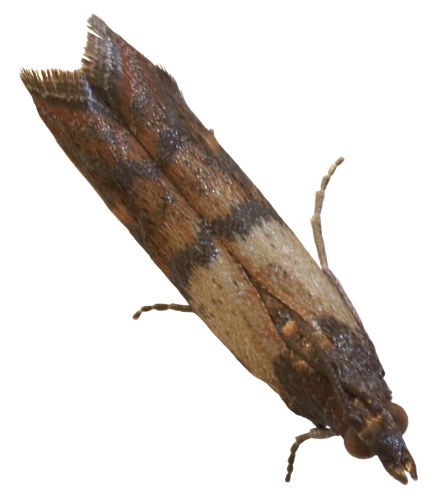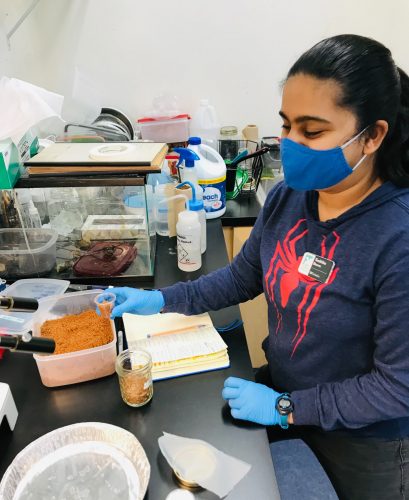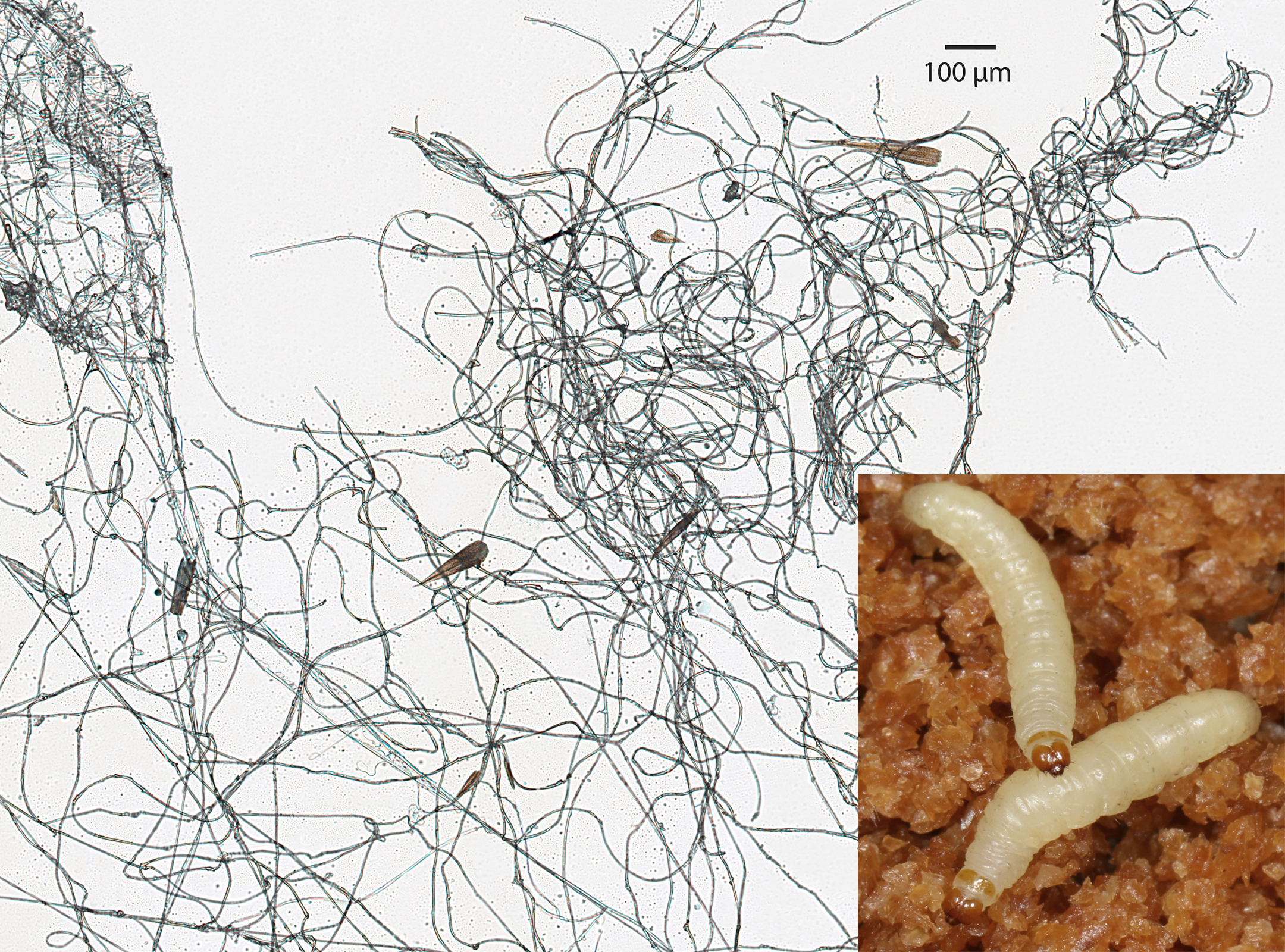The McGuire Center is proud to sponsor Toshita Barve through the University Scholars Program of UF’s Center for Undergraduate Research. This program allows undergraduates to work closely with faculty mentors for a beyond the classroom research and learning experience.

Since January of 2021, Toshita has been working in the Kawahara Lab studying the life history of the Indian meal moth, Plodia interpunctella, and investigating the properties of silk produced by the larvae. The tiny caterpillars of these moths are pests of grains and stored products around the world but are ideal for keeping in a research lab colony.
In addition to developing her own research questions, Toshita has been responsible for maintaining the lab colony. Every 3 weeks, she anesthetizes adult moths in a Carbon dioxide chamber and quickly sorts them into mating jars. The tiny 0.5 mm eggs are then collected the next day and placed in containers with a wheat bran-based artificial diet to raise the larvae.
Plodia caterpillars have between 5 to 7 instars. Caterpillar “instars” are the numbered larval stage between each molt. While the length and width of a caterpillar increases in the time between molts, the head capsule, and mouthparts, including the silk spinneret, are thought to stay the same size. The spinneret is a hardened or chitinized tube through which the silk is pumped into strands from the silk glands. Does the rigidity of the spinneret mean the silk strands are always the same thickness?

To help answer this question, Toshita is measuring and comparing the diameter of silk produced by individual larvae in different behavioral situations. Plodia larvae spin a thin silk pouch or cocoon in which they pupate but also leave trails of silk while just wandering around and will release a “life-line” of silk when falling from a surface.
Measuring silk is by no means a simple task. It requires hours of observation and special techniques to collect strands on microscope slides for high resolution imaging and statistical analysis. Toshita presented her project last November at the Entomological Society of America annual conference in Denver and was awarded first place in the undergraduate Systematics, Evolution, and Biodiversity section. She plans to present her work at the 2022 Spring Undergraduate Research Symposium hosted by the Center for Undergraduate Research at UF and looks forward to submitting her results for publication before she graduates later this year.
The Kawahara lab is investigating the origins and dynamics of silk production across arthropod taxa using genomics and gene editing technology. Maintaining stocks of model organisms such as Plodia (family Pyralidae) and several species of giant silk moths (family Saturniidae) is essential for these studies.
